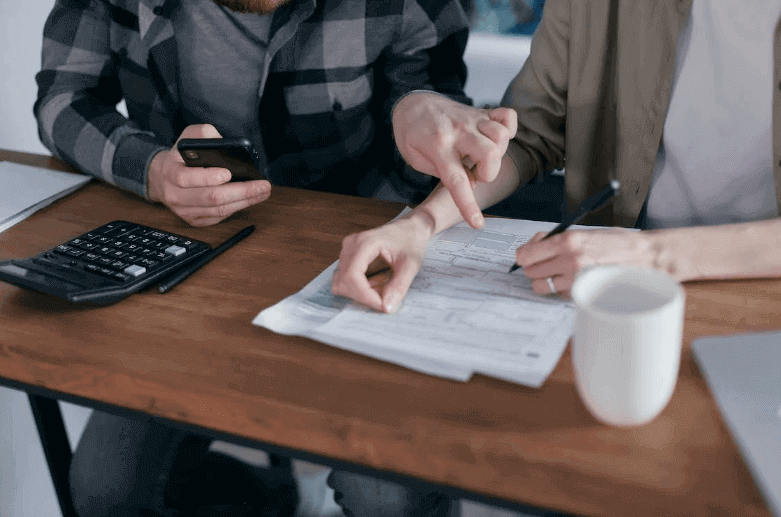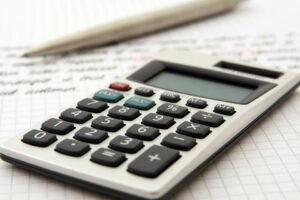An overdraft is a deficit in a bank account, caused by withdrawing out more money than the account holds. According to the Financial Health Network, 17% of Americans were financially vulnerable in 2019, which makes it unsurprising that 16% of households with checking accounts reported overdrafting at least once in 2020.
There are many reasons why you may need to use an overdraft, including having to fund an emergency cost or pay unanticipated bills. With this in mind Pheabs reveals when it may be sensible to use your overdraft, as well as alternative options to this.
What Is An Overdraft?
According to the Consumer Financial Protection Bureau, “An overdraft occurs when you don’t have enough money in your account to cover a transaction, but the bank pays the transaction anyway. ” This means that the money is withdrawn from your bank account despite the funds not being there. As a result, you have a negative value of money within your account.
An overdraft can occur when you spend via ATM transactions, debit card purchases, electronic or in-person withdrawals, automatic bill payments or payed in checks. It is then expected that you will add money into your bank account as soon as possible to restore your balance to a positive value.
Why Might I Need To Use My Overdraft?
If you are low in funds and need to cover an urgent cost without having enough money in your account to cover it, the bank can conduct a transaction via an overdraft coverage option. Reasons you may need to use your overdraft include due to unexpected medical bills, dental fees, vet costs, house repairs, if your car has broken down or if you need money for petrol. Having to pay for funeral costs or any other unforeseen expenses may also lead you to using your overdraft.
Overdraft coverage can be a sensible choice as it may save the customer additional charges and prevent damage to their credit rating that could arise if for instance their checks or payments bounced. It can provide a useful form of temporary financial relief to help pay for urgent bills.
What Type Of Overdraft Options Are There?
If you have a current account, you should be able to access an authorized overdraft from your bank. It is important to check the bank’s terms and conditions as whilst there are some handy interest-free overdrafts, others can have expensive charges and interest rates. Make sure that you stay within the overdraft limit you are given as otherwise you will go into an unauthorized overdraft which can be very costly and lead to financial difficulties.
There is also usually the option to have overdraft protection whereby you can link up to 3 of your other bank accounts to cover overdrafts on your checking account. In this case, funds are automatically transferred to cover a negative balance. Again, it’s important to check the terms and conditions with your bank as transfer fees may apply.
How Can I Pay Off My Overdraft Quickly?
You will want to pay off your overdraft as fast as possible to avoid paying any interest fees and to get your finances back on track. Ways to pay it off quickly include sticking to a strict budget each month so that you can start paying off the debt in manageable chunks. This can be achieved through simple techniques such as meal prepping, making some easy changes to reduce your energy bills or cutting down on unnecessary expenses such as gym memberships or TV subscriptions.
You could also find ways to get fast cash, such as working overtime or by starting a side hustle. Selling unwanted items you no longer need on online platforms such as eBay is also an easy way to boost your cash flow.
Alternatively if you are paying lots of interest or bank fees for your overdraft and have savings stashed away, it may be worth dipping into them. Just make sure that you transfer money back into your savings account as soon as you are able to do so.
What Are Alternative Options To Overdrafts?
There is no doubt that overdrafts can be costly. American households spent nearly $11 billion on overdraft charges in 2021. It therefore might be worth considering other options before using it.
For instance, you could borrow cash from family or friends or ask for a salary advance from your employer. A credit card could also help you pay for emergency purchases – just make sure that you are able to pay off the balance during the interest-free period.
An additional possibility is taking out a payday loan as this offers a quick and easy way to borrow money. With bad credit options too, payday loans provide a quick injection of cash when you need it the most. However, you should check the interest rates before you apply for a payday loan as an authorized overdraft may still be cheaper than this financial product.






